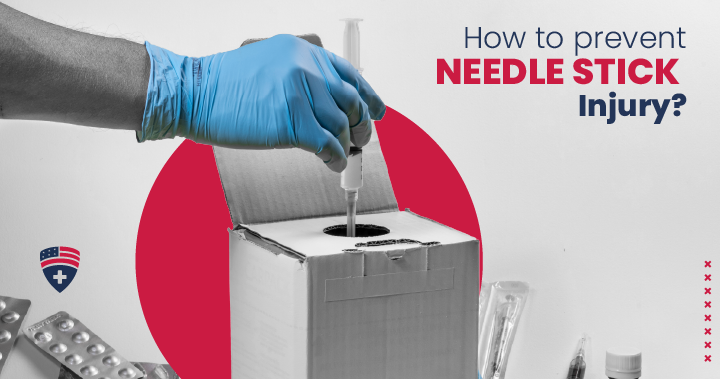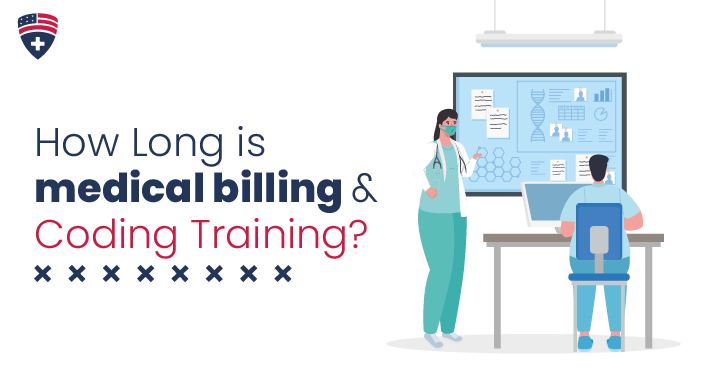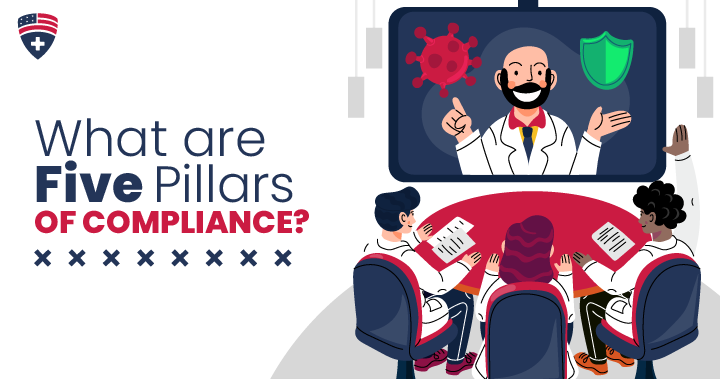
Essential Emergency Procedure Guide: Safeguarding Your Team and Workplace
Emergencies can happen suddenly, anywhere, and at any time. When a crisis hits, quick decisions are needed, but the usual way of doing things may not work.
The stress of the situation can make it hard to think clearly, leading to mistakes.
That’s why having a plan for emergencies is very important at work.
Emergency procedures in the workplace are like a safety plan that everyone should know. Whether it’s a medical emergency, a fire, or something else, being ready can help a lot.
American Healthcare Compliance (AHC) provides a course on Emergency Preparedness and Response Action Plans for healthcare professionals. It teaches how to respond to emergencies effectively.
Contact Us at American Healthcare Compliance today to enroll in our training courses.
Below we’ll talk about emergency procedures at work, including planning called an emergency procedure guide.
We’ll explain what they are, why they’re important, and how you can make sure you’re prepared for anything that happens.
So, let’s get started and learn how to keep you, your team, and your workplaces safe.
Emergency Preparedness at Work
Emergency preparedness at work involves being ready to deal with emergencies that may occur in the workplace.
This includes having plans, procedures, and training to respond effectively to various types of emergencies.
Implementing emergency procedures at work keeps employees safe and minimizes property damage.
Additionally, it helps organizations maintain business continuity during times of crisis
What is an Emergency Action Plan?
An emergency action plan is a crucial component of a workplace continuity strategy.
It consists of a set of instructions designed to minimize the impact of an emergency. It covers different emergencies like medical problems, fires, and disasters like earthquakes.
Having a plan helps keep things under control and gets things back to normal quickly.
It also helps find any problems in how things are done so they can be fixed before anything bad happens.
Check out our blog for more information about emergency action plans.
Components of an Emergency Action Plan
An emergency action plan contains which of the following elements? It typically includes:
- Clear evacuation routes marked with exit signs.
- Procedures for reporting emergencies.
- Designated assembly points for accountability.
- Contact information for emergency responders.
- Protocols for individuals with disabilities.
- Methods for alerting personnel during emergencies.
Creating an Emergency Procedure Guide
An emergency procedure guide is like a handbook for employees. It tells them what to do in different emergencies and gives step-by-step instructions to follow.
From fire safety tips to an evacuation plan and contact information, this guide equips individuals with the knowledge they need to respond effectively in bad situations.
Identifying Workplace Emergency Hazards
While workplaces have various hazards, not all emergencies have the same risks.
Workplace emergencies involve all of the following hazards except situations where hazards are reduced or controlled.
Common workplace hazards include:
- Fires
- Chemical spills
- Medical emergencies
- Natural disasters
Medical Emergency Response
Medical emergencies can range from minor injuries to life-threatening situations.
Medical emergency procedures in the workplace typically include:
- First Aid Kits: Stocking first aid kits with essential supplies.
- Emergency Contacts: Providing contact information for medical professionals and emergency services.
- CPR and First Aid Training: Training employees in CPR, basic first aid, and the use of AEDs (Automated External Defibrillators).
Fire Drill Procedure at Workplace
According to statistics, fire incidents in the United States lead to approximately 300,000 injuries and 12,000 fatalities annually.
Moreover, fires account for roughly $3 billion in property damage each year.
Fire drills are crucial for getting employees ready to react calmly and effectively if there’s a fire.
During a drill, individuals practice leaving the building using specific routes, then proceed to a designated meeting spot where they listen to instructions from assigned leaders.
Fire drill procedures at the workplace include:
- Listening to the fire alarm and leaving the building.
- Going outside and staying away from danger.
- Helping others who may need it.
- Waiting for the all-clear before going back inside.
Implementing Basic Response Procedures During a Fire Incident
In case of a fire, quick action can save lives. 10 basic response procedures during a fire incident include:
- Stay calm and pay attention.
- Find and press the closest fire alarm.
- Leave the building through the nearest exit.
- Don’t use elevators, take the stairs instead.
- When safe, immediately call 911.
- Help anyone who needs assistance, like those with disabilities or injuries.
- Close doors as you leave to stop the fire from spreading.
- Go to the spot where everyone gathers outside.
- Don’t go back inside until the authorities say it’s safe.
- Listen to the people in charge, they’ll tell you what to do.
- Wait for emergency responders to give more instructions.
Initiating the Emergency Response System
After immediately initiating the emergency response system, organizations must maintain clear communication channels and coordinate responses effectively. Here’s what they should do:
- Call emergency services and tell the right people about what’s happening.
- Provide updates to employees and relevant stakeholders through clear communication channels.
- Have backup plans ready to go if things don’t go as expected.
- After it’s all over, talk about what happened and figure out how to make things better next time.
Training for an Emergency Action Plan
Training is really important to make sure employees know what to do during emergencies. Here’s what emergency action plan training should include:
- Learning about the emergency procedures and rules to follow.
- Practicing how to leave the building safely and what to do in different situations.
- Knowing about any dangers that are specific to the workplace.
- Taking refresher courses and learning about any changes that may happen.
Ensuring Compliance with OSHA Standards
The Occupational Safety and Health Administration (OSHA) enforces workplace safety regulations. These rules [29 CFR 1910.38(a)] include having emergency plans in place. Emergency action plan OSHA requirements include:
- Conducting regular risk assessments and hazard analyses.
- Training employees on emergency procedures and protocols.
- Documenting emergency action plans and procedures.
- Reviewing and updating plans as necessary to reflect changes in operations or facilities.
Conclusion
Having an emergency procedure guide for your workplace is very important.
It’s like a handbook that tells everyone what to do if something bad happens, like a fire or someone getting hurt.
The emergency procedure guide includes step-by-step instructions for various emergencies.
By following the guide and practicing what to do regularly, everyone can be prepared to stay safe in case of any unexpected events.
FAQs
Are employees required to undergo CPR training?
CPR training isn’t always required, but it’s strongly advised for all employees. It helps improve responses during medical emergencies.
Can we use emergency drills to prepare for other types of emergencies or incidents?
Yes, emergency drills can help us practice for other problems too, like storms or accidents.
How often should we do fire drills at work?
Fire drills should happen at least once a year so everyone remembers what to do.






